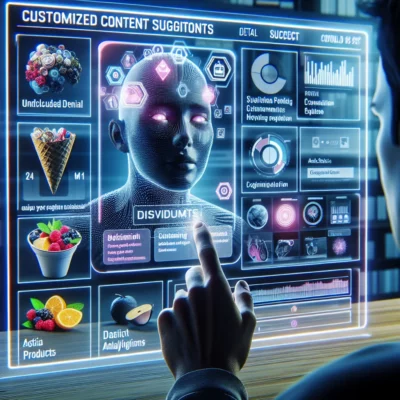In today’s digital age, where competition is fierce and attention spans are short, mastering personalized content is crucial for engaging users and driving conversions. Automated recommendation systems play a key role in delivering tailored content to users, making their experience more personalized and relevant. In this blog, we will delve into the world of automated recommendation systems, explore how to design effective personalized content delivery, and discuss strategies for optimizing product suggestions to enhance user engagement.
Understanding Automated Recommendation Systems
Automated recommendation systems are algorithms designed to analyze user data and behavior to provide personalized recommendations. These systems are widely used in e-commerce platforms, media streaming services, and digital marketing to enhance user experience and drive sales. By understanding the definition and purpose of automated recommendation systems, businesses can leverage this technology to deliver targeted content to their users.
Definition and Purpose of Automated Recommendation Systems
Automated recommendation systems utilize machine learning algorithms to analyze user data, such as browsing history, purchase behavior, and preferences, to predict and recommend items that the user may be interested in. The primary purpose of these systems is to enhance user experience by providing relevant and personalized content, ultimately increasing user engagement and driving conversions.
Importance in E-commerce, Media Streaming, and Digital Marketing Platforms
Automated recommendation systems play a crucial role in various industries, including e-commerce, media streaming, and digital marketing. In e-commerce platforms, these systems help users discover products they are likely to purchase based on their browsing and buying behavior. In media streaming services, recommendation systems suggest movies or TV shows based on the user’s viewing history. In digital marketing, personalized recommendations can lead to higher click-through rates and conversions.
Designing Effective Personalized Content Delivery
To design effective personalized content delivery, businesses need to focus on data collection and analysis to understand user preferences and behavior. By tailoring content based on these insights, businesses can create a more personalized experience for their users, leading to increased engagement and loyalty.
Data Collection and Analysis for Personalized Recommendations
Effective personalized content delivery starts with robust data collection and analysis. Businesses need to gather data on user interactions, such as clicks, views, and purchases, and analyze this data to identify patterns and preferences. By leveraging data analytics tools and techniques, businesses can gain valuable insights into user behavior and tailor content accordingly.
Tailoring Content Based on User Behavior and Preferences
Once businesses have collected and analyzed user data, the next step is to tailor content based on user behavior and preferences. This can include recommending products or content similar to what the user has previously interacted with, personalizing email campaigns based on user preferences, or customizing website content based on demographic information. By delivering content that resonates with users, businesses can enhance user engagement and drive conversions.
Optimizing Product Suggestions for Enhanced User Engagement
Optimizing product suggestions is essential for enhancing user engagement and driving conversions. By implementing A/B testing and performance evaluation strategies, businesses can continuously optimize their product recommendations to improve user engagement and conversion rates, ultimately maximizing the impact of personalized content delivery.
A/B Testing and Performance Evaluation of Product Suggestions
A/B testing involves comparing two versions of a product recommendation to determine which one performs better in terms of user engagement and conversion rates. By testing different variations of product suggestions and analyzing the results, businesses can identify the most effective strategies for engaging users and driving conversions. Performance evaluation metrics, such as click-through rates, conversion rates, and revenue generated, can help businesses assess the impact of their product suggestions and make data-driven decisions for optimization.
Continuous Optimization Strategies for Improved User Engagement and Conversion Rates
Continuous optimization is key to maximizing the effectiveness of product suggestions and enhancing user engagement. By regularly monitoring performance metrics, analyzing user feedback, and implementing iterative improvements, businesses can ensure that their personalized content delivery remains relevant and impactful. Strategies such as updating product recommendations based on seasonal trends, user feedback, and market dynamics can help businesses stay ahead of the competition and drive conversions.
In conclusion, mastering personalized content for user engagement requires a deep understanding of automated recommendation systems, effective personalized content delivery, and optimization strategies for product suggestions. By leveraging the power of data analytics, machine learning algorithms, and continuous optimization, businesses can create a personalized experience that resonates with users, drives engagement, and ultimately leads to conversions. Embracing personalized content is not just a trend but a necessity in today’s competitive digital landscape.



